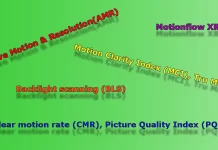In 2012, Philips, a longtime manufacturer of a wide range of electronic products, including home appliances and televisions, embarked on a significant strategic change. Faced with changing market dynamics, Philips moved away from direct TV production. Many factors influenced this decision, including the emergence of smart TVs in 2010, which required significant investment in new developments, and the entry of Chinese manufacturers offering more affordable TVs. These changes have intensified competition and reduced Philips’ profits.
To adapt to these market conditions and leverage its well-established brand, Philips licensed its trademark to other manufacturers. This strategy allowed Philips to earn passive income from the brand name and the companies that bought the license to benefit from the Philips name.
Two significant corporations acquired the licensing rights:
- Funai Electric Co., Ltd.: This Japanese corporation obtained the rights to manufacture and sell Philips-branded televisions in North America and some Latin American countries.
- TP Vision: This company was established with Philips and obtained the rights to manufacture and sell Philips-branded TV sets outside North America.
A Brief History of Philips TVs 1950-2024
Until 2012, Philips TVs were manufactured by Philips. The history of Philips television production began in the 1950s; Philips produced high-quality televisions that were in demand worldwide. In the early 1990s, the television production industry experienced changes associated with the globalization of production. Factories began to be moved en masse to China, where, at that time, there was cheap labor. In the mid-2000s, it became clear that smart TVs with large screens were the future. The transition to producing such large televisions required some changes in production processes.
The industry crisis occurred at the beginning of 2010; there was great competition in the market, rapid changes in technology, and televisions made 2-3 years ago were significantly inferior to newer models, which required a balanced approach between production and sales, which led some companies to losses in the production of televisions. During this period, old brands began leaving this business line en masse. In addition to Philips, such well-known brands as Toshiba, Sharp, and Grundig, Thompson left the TV production business.
In 2012, Philips got rid of the television business, and the company left this area. According to the licensing terms, Philips receives income from using the brand and maintains a single Internet resource on which licensees post information about televisions. This approach allows licensees to represent their products on behalf of Philips, and many buyers were initially unaware that Philips did not make the televisions.
Information resources about TVs are available on the Philips portal in the appropriate sections; when you go to the TV section, you will be redirected to pages that support companies.
TPV Vision: https://www.philips.co.uk/c-m-so/tv
Funai: https://www.usa.philips.com/c-m-so/tv
Philips TV brand licensees
As I already mentioned at the beginning of the article, Philips TVs are now produced by two companies that have bought a license to produce TVs. Now in more detail about how things are going with the production of TVs after licensing the brand.
Philips TV brand licensing in North America (Funai)
In North America, the manufacture and sale of Philips-branded televisions has been managed by Funai Electric Co., Ltd. since 2008. Funai initially acted as a sales representative for Philips, distributing televisions in the United States and Canada. By 2012, when Philips brand licensing became an issue, Funai obtained a license to manufacture and sell Philips-branded TVs independently, particularly televisions.
Funai is recognized as an OEM (Original Equipment Manufacturer), adept at producing various electronic devices for various brands according to customer specifications. Funai’s manufacturing operations are mainly based in China. However, due to trade disputes between the United States and China, it has considered moving TV production to countries such as Thailand, Vietnam, or Mexico.
2013 Funai was in preliminary talks to acquire Philips’ electronics manufacturing plant in Mexico. However, this deal did not materialize, and Funai eventually backed out of the investment. As a result, Philips spun off its Mexican operations into a separate company, which was sold in 2014. After 2014, production of Philips TVs in Mexico ceased.
Funai faced several challenges along the way in the production of Philips TVs. The mid-2010s saw a significant influx of low-cost TVs from Chinese manufacturers into the U.S. and Canadian markets. With Funai’s similar products, the Philips brand began to lose its appeal in the market. By 2017, Funai stopped producing new TV models, although these models remained available until early 2022.
In 2022, Funai revised its strategy for the Philips TV lineup. The company shifted from Android-powered TVs to Google TVs to Roku TVs in 2023. Funai has also changed the year designation in the model numbers of Philips TVs. The year identifier now directly corresponds to the last digit of the actual year of production. Please refer to the article “Philips TV Model Number Decoding” for a detailed explanation of this change and model number decoding.
Philips TV brand licensing in North America (TP Vision)
TP Vision, which manufactures and distributes Philips-branded televisions, has a prominent position in the market, especially in Europe, where the Philips brand is trendy. Many European consumers are unaware that Philips stopped producing TVs over a decade ago, contributing to the brand’s continued popularity in the region. TP Vision, therefore, regularly updates the Philips TV range to meet this market demand.
TP Vision originated as a joint venture initially owned by China’s TPV Technology (70%) and Philips in the Netherlands (30%). In 2014, a significant corporate change took place when TPV Technology purchased the remaining shares of TP Vision from Philips, becoming the company’s sole owner. TP Vision’s extensive manufacturing footprint includes 13 plants, five located outside China – in Russia, Mexico, Argentina, Brazil, and Poland. These international facilities are in addition to seven factories in China, where TVs and accessories are manufactured.
In addition to manufacturing Philips TVs, TP Vision is a major OEM (Original Equipment Manufacturer) of TVs and monitors. The company’s brand portfolio includes Philips (for TVs, monitors, and soundbars), AOC, Great Wall, AGON, and Envision. The strategic location of factories in critical sales regions aligns with TP Vision’s goal to minimize taxes and optimize logistics. This approach facilitates the final assembly of TVs closer to the point of sale, improving the efficiency of product delivery to retailers.
TP Vision has faced various challenges throughout its work with the Philips brand. While the brand remains highly recognizable in Europe and Australia, its position in some markets was somewhat destabilized in the early 2020s. For example, in China and India, the most recent Philips TV models were released in 2021.
TP Vision’s strategy to make Philips TVs more attractive involves tailoring product positioning to specific countries. For example, Philips TVs are marketed primarily as Mini LED and OLED TVs in Australia and New Zealand. In Europe, TVs are positioned as Ambilight, OLED, The Xtra, and The One series. This targeted approach allows TP Vision to cater to different consumer preferences and market trends in different regions.
Philips TV factory
TP Vision, a key player in Philips-branded TVs, operates several factories worldwide, each serving specific regional markets. Let’s find out the details about these factories:
- Philips TV factory in Poland: One of TP Vision’s largest manufacturing plants is located in Gorzow Wielkopolski, Poland. Operating under the name TPV Displays Polska, this factory is limited to assembly and produces circuit boards for televisions. With a production capacity of about 4 million TVs per year, this factory mainly supplies Philips TVs to the European market.
- Philips TV factory in Russia: In Russia, Philips TVs are assembled in the village of Shushary near St. Petersburg. AOC TVs are also assembled at this plant, emphasizing TP Vision’s broader brand portfolio. The Russian plant has a capacity of about one million TVs per year. Components for these TVs are sourced from China, and the assembled products are sold primarily in Russia and various Asian countries.
- Philips TV factory in Brazil: Brazil’s involvement in producing Philips TVs has varied. Until 2016, there were two assembly plants in Jundiaiai and Manaus. With the Jundiai plant’s closure, the Philips TVs’ assembly is now centered in Manaus. The TVs produced here are mainly for the Brazilian market.
- Philips TV factory in Argentina: Located in Rio Grande, the Philips TV factory in Argentina is one of TP Vision’s oldest facilities, having started operations in 1982. This factory specializes in the production of televisions specifically for the Argentine market.
- The factories in China produce various components and TVs, mainly for Australia, New Zealand, and other countries.
Each plant plays a unique role in TP Vision’s global Philips brand strategy, meeting regional needs and contributing to the brand’s broad presence in different markets.








First question, did you do something with the engineering settings of the TV? This usually happens if you select the wrong type of display matrix. If you have not done anything, there is most likely a fault in the display control board.
How do I rotate the screen of my Philips TV. All my pictures are upside down.
TV model: 40PFL8664H/12
Please help.
See website, support, contact us
I purchased a 75 inch Philips TVs and within the year it broke so the place that I was paying on it. Gave me another one exactly the same I’ve had it for eight months and this one broke. I am very unhappy with this company Phillips. I paid all that money for a TV that breaks down within a year. Where can I call to complain
You must register your TV at the Philips website. Although Philips does not make TVs, they provide unified support at https://www.usa.philips.com/c-m-so/tv.
I’m trying to file a claim for my phillips 50 inch android tv that I purchased from walmart, I’m going through (square trade) an allstate company to go through the warranty, and in the process of this, I’m being told that since my purchase for this tv was less than a year ago, that I should go thtough the manufacturer’s warranty. So I’ve been prompted to a page that is asking for the name of the manufacturer but I’m having no real luck with finding a specific name. I’ve put funai into the box that asks for the manufacture’s name but that one isn’t an option. Can I please get a specific name for who manufacture’s phillips tv’s. Or more specifically, phillips 50″ android tv’s with google assistant? Thank you
see what model of TV you have, then find a compatible remote on Amazon.com
My name is Sheila Johnson I live in Houston Texas I need a remote control for my Philip TV could you please let me know in my email how can I get another boat control for the Philips TV I misplaced it and I don’t know where it’s at